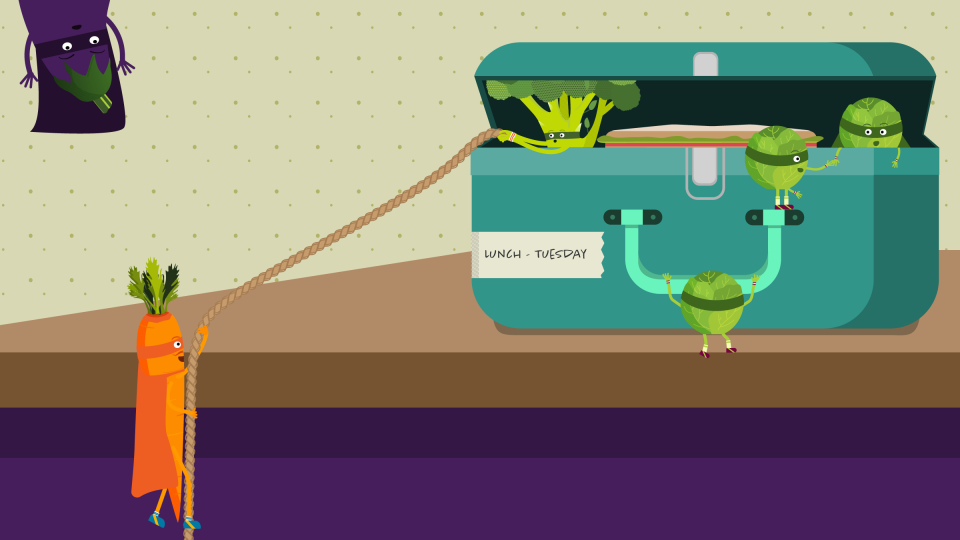
Lettuce, turnips and broccoli, oh my! Trying to eat more vegetables can be intimidating, especially if you’re a busy person who would totally flunk culinary school. But you know adding more green (and purple, red and orange) to your meals is important for your health. So what’s a wannabe veggie enthusiast to do?
You may get inspired scrolling through pretty food photos on Instagram, but let’s be realistic: Will you really have the time and energy to make picture-perfect vegetable dishes every night? Probably not. But that doesn’t mean you have to admit defeat and order a pizza.
“If it’s a big production, you won’t do it on a regular basis, so make it easier for yourself,” says Natalia Groat, M.S., R.D., C.D., a clinical dietitian at Harborview Medical Center.
Oh, and before you start stocking up on jumbo salads and rocking that “Kale Yeah” T-shirt, take note: You should probably go slow when introducing more vegetables into your diet. If you don’t, you may experience some, er, uncomfortable side effects thanks to all that extra fiber.
“When you transition to a high-fiber diet, it can cause bloating, gas and more bathroom trips. Once the body adjusts to having more fiber, the symptoms will go away,” says Molly Haas, M.S., R.D., a clinical dietitian at Harborview Medical Center.
So, are you ready to do something good for your health? Here are Groat and Haas’ easy, practical ways to add more veggies to your diet.
Add vegetables to everything
Having soup for lunch? Add in some frozen peas or corn. Making an omelet? Add mushrooms. Look at what you already plan on eating and see if there’s a way to add more veggies. You can also apply this strategy to some of your go-to recipes. Who says you can’t add broccoli to that mac and cheese?
Go frozen
Frozen vegetables are typically picked when they’re ripe and then flash frozen. Therefore, they’re just as nutritious as fresh vegetables. You can also buy canned vegetables—just make sure they don’t have added salt or sugar. Buying frozen or canned also tend to be cheaper, which is great for your wallet.
Don’t be a perfectionist
If you prefer buying organic but the store is out of your favorite vegetable, go ahead and buy the non-organic version of it (and don’t feel guilty). Organic produce isn’t more nutritious than non-organic. Yes, veggies on the “dirty dozen” list are best to buy organic and thus avoid pesticide residue, if possible, but it’s better to eat a non-organic vegetable than to not eat a vegetable at all. Also, don’t shy away from “ugly” vegetables: They may not be pretty, but they’re just as good for you.
Go vegetarian (even temporarily)
When you eat out, choose the vegetarian option, even if you enjoy meat. Many restaurants will compensate for the lack of meat by adding more vegetables to the dish.
Liven up your greens
Tired of the same old Caesar salad for lunch? Now you have a use for that lone chicken breast languishing in your freezer. Mix up your salad by adding last night’s leftovers or anything sitting in your fridge or cupboard that would go nicely with greens, such as nuts, dried fruit or even some leftover cheese.
Don’t force yourself
If you don’t like a particular vegetable, don’t force yourself to eat it. Kale may be a so-called superfood, but if it makes your face pucker, you’re better off buying something you’ll actually eat instead of “lose” in the back of your fridge until the expiration date has passed. Spinach, for example, is a great alternative that is just as nutritious. And even if you pick a veggie that isn’t a superfood, what matters is that you’re eating healthier food in the first place—so stop comparing.
Be a glass half-full person
Instead of telling yourself you need to stop eating other foods that aren’t as healthy (we’re looking at you, potato chips) and deprive yourself of things you enjoy, focus on what you’re adding to your diet. Find creative ways to eat more veggies and have fun with it. After all, you might as well enjoy what you eat.

 Healthy ideas for your inbox
Healthy ideas for your inbox





